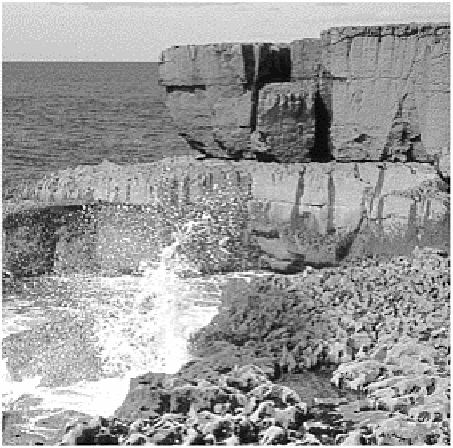Environmental Engineering Reference
In-Depth Information
Plate 17.2
Coastal chemical weathering; solution pits (lapies)
formed by the solution of Carboniferous limestone on a wave-
cut rock platform in County Clare, Ireland.
Photo: Ken Addison.
surprisingly active, especially in the tropics, where sea water often becomes saturated
with dissolved carbonates (Plate 17.2). Biochemical weathering assists by CO
2
respiration in rock pools and through marine boring animals and leachates from algae and
marine plants.
SEDIMENT TRANSPORT AND DEPOSITION
Sediment transfers and deposition are major processes in continuously moving coastal
waters and account for the greater proportion of landforms. Their principal sources are
terrestrial sediments carried seaward by rivers and glaciers, products of coastal erosion,
offshore sediments carried landward and
in situ
accumulation of biogenic debris. The
continental slope is the ultimate sink for transient coastal sediments. Sediment budgets,
calculated with increasing attention to coastline management, allow us to chart the
quantities and transfer routes involved with varying degrees of accuracy (Figure 17.6).
Coastal erosion contributes a surprisingly small proportion - about 1 per cent of
terrigenous yield - and biogenic sediments make substantial local contributions. Shell
and other calcareous debris can be important on wave-dominated coasts, with plant debris
more abundant on tide-dominated coasts. Offshore sources are difficult to assess, and
temperate high latitudes depend heavily on finite Pleistocene glacigenic supplies.
Although the −20 m submarine contour is the maximum limit within which wave motion
can move sand shoreward, the offshore source was well stocked as Late
Devensian
and

